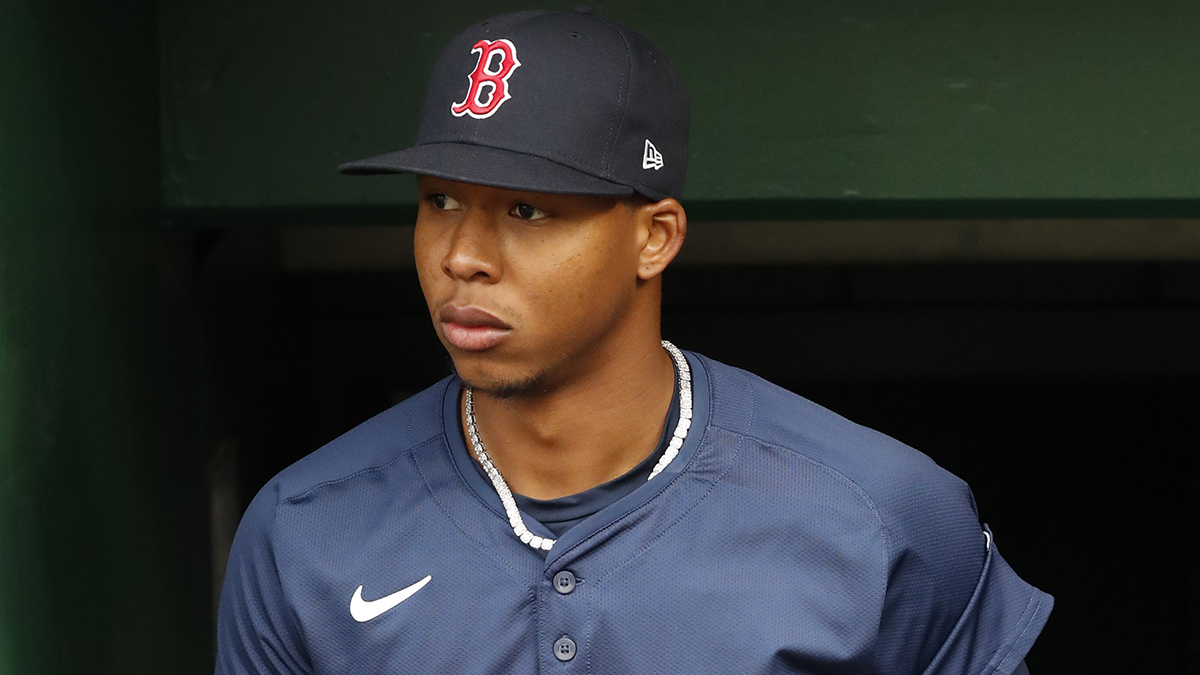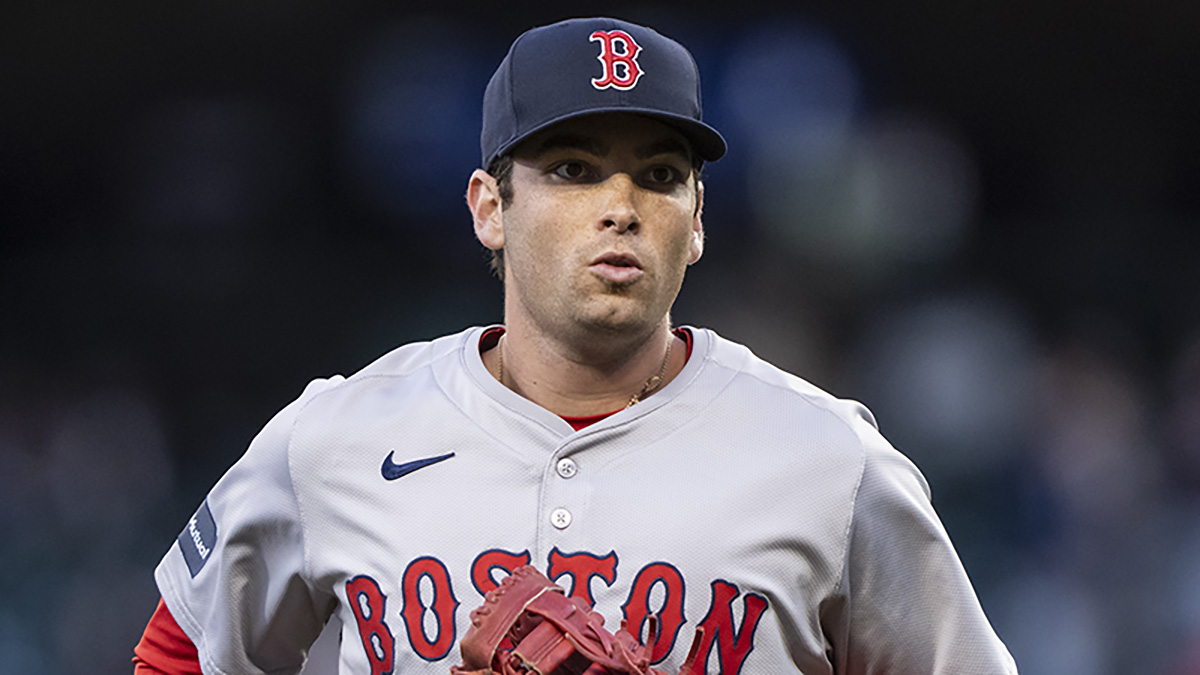Michael Chavis can hit fastballs. His first swing of consequence, after all, launched a 99 mph Jose Alvarado offering to the deepest reaches of Tropicana Field for a pinch double last April.
That pitch was just above the knees, however, just where Chavis likes it, and the result helped mislead the rest of baseball for the first month of his career. "He can hit 99," the thinking went, "so let's see how he handles the soft stuff."
Ten home runs and twice as many pulverized sliders later, it was time for Plan B.
Enter the Astros.
LIVE stream the Celtics all season and get the latest news and analysis on all of your teams from NBC Sports Boston by downloading the My Teams App.
On May 24, the Red Sox opened a three-game series in Houston. Chavis was hitting .270 with 10 homers and a .911 OPS in 29 games, making a serious case for Rookie of the Year. He had struck out 32 times, an acceptable number for someone on pace for 40 tape-measure bombs.
Chavis led off the series against Wade Miley and struck out swinging on an elevated 92 mph fastball. He faced eventual Cy Young winner Justin Verlander three times in the finale and saw 14 pitches, all fastballs, 11 of them above the belt. He didn't put a single one in play, striking out three times and finishing with six K's in 10 at-bats. Gerrit Cole had already blown him away a couple of times earlier.
Boston Red Sox
From that point forward, Chavis hit just .242 with a .681 OPS and 93 strikeouts in 236 at-bats. The book on him was translated into every one of baseball's couple dozen languages, and it consisted of just four words: can't hit high fastballs.
"I would take a shot in the dark and say I'm not the first person to struggle against them," Chavis said recently. "It was the first time I felt exposed. It's a combination, they're phenomenal pitchers, but also I'm still trying to learn how to be a big leaguer. A lot of it was just in my own head, getting in my own way."
As Chavis embarks on his second season, he's well aware of this presumed deficiency in his game. And he has learned some important lessons that he believes will make a difference in 2020 as he looks to stick as a utility infielder or maybe even the starting second baseman if he can outplay Jose Peraza.
"You can't hit the ones that aren't a strike," Chavis said. "Essentially what I was trying to do was cover everything. I tried to cover the fastball middle in, the fastball up and in, the fastball up and away, I tried to cover everything and I started expanding up. So then I started getting worried about expanding down, and it snowballed.
"It's not that I can't hit a high fastball. You can find plenty of videos of me hitting high fastballs. My best talent is probably my fast hands, which goes very well with hitting high fastballs. A lot of it was just an approach of trying to do too much and getting in my own way."
Part of what made Chavis so impressive last April and May was his ability to lay off the high hard ones. But once he started swinging, he couldn't stop. Per Brooks Baseball, Chavis hit just .113 (6 for 53) on four-seam fastballs above the belt. In the upper third of the strike zone alone, he swung and missed at a staggering 39 percent of four-seamers. As a means of comparison, teammate Xander Bogaerts -- a tremendous high fastball hitter -- swung and missed there less than 10 percent of the time.
Manager Ron Roenicke believes the key for Chavis in 2020 isn't so much catching up to those pitches, but ignoring them.
"Nobody hits the fastball at the top of the zone, maybe Bogey, but there aren't many, and so if you're not really good at this pitch, which hardly anybody is, you really have to lay off it," Roenicke said. "So it's more the discipline part of it."
Chavis admits the struggles wormed their way into his head and took root.
"When I started expanding the zone, that's just timidness, trying to be too protective, and it was compounded by the results I was having -- striking out more, having tough ABs, falling into two-strike counts really early," he said. "That's something that was frustrating. I told myself I was really tired of falling behind 0-2, 1-2. Even when you're going good, that's a tough AB. One thing I remember telling myself is to be aggressive early, so I started being too aggressive chasing pitches out of the zone, and next thing I know, he hasn't thrown a strike and I'm sitting there 0-2."
While Chavis was no stranger to struggles -- he hit just .223 in his full-season debut after being taken in the first round of the 2014 draft -- he had never struggled with such high stakes, and he admits that it affected him.
In the minors, after all, wins and losses don't matter. Development does. In the big leagues, that equation inverts.
"We're not working on progression, we're working on winning ballgames," he said. "I have to find a way where even though I don't feel good and I don't really know what's going on with my swing, I still have to find a way to compete, and that was something I still had to learn.
"Then when it gets exposed, that's when I don't want to get sent down. I felt like I was fighting for my life. Realistically, that's what it was every single day, that's what I was thinking about. And that more than anything is what got in my way, where I'm so worried about being sent down. I started making up scenarios in my head that aren't even real."
And so as Chavis prepares for 2020, he enters with a clear mind. The fastball above the belt that's so tempting must become a take so pitchers attack him where he can do damage.
"I'd say that's the normal me," he said. "It's not like I need to bring that guy back, but just allow myself to play. When I'm smiling on the field, when I'm relaxed, I'm not getting in my own way. I'm not getting the high fastball and trying to hammer it for a home run and getting all muscly. I just let it flow and make contact. It's frustrating, because you can say it's just me getting in my own way, but it's not as easy as saying don't think that way. It's like asking someone not to think about a pink elephant."
Call it the pink elephant in the room, then. Chavis knows how pitchers will attack him, and they're not going to change until he makes them.


